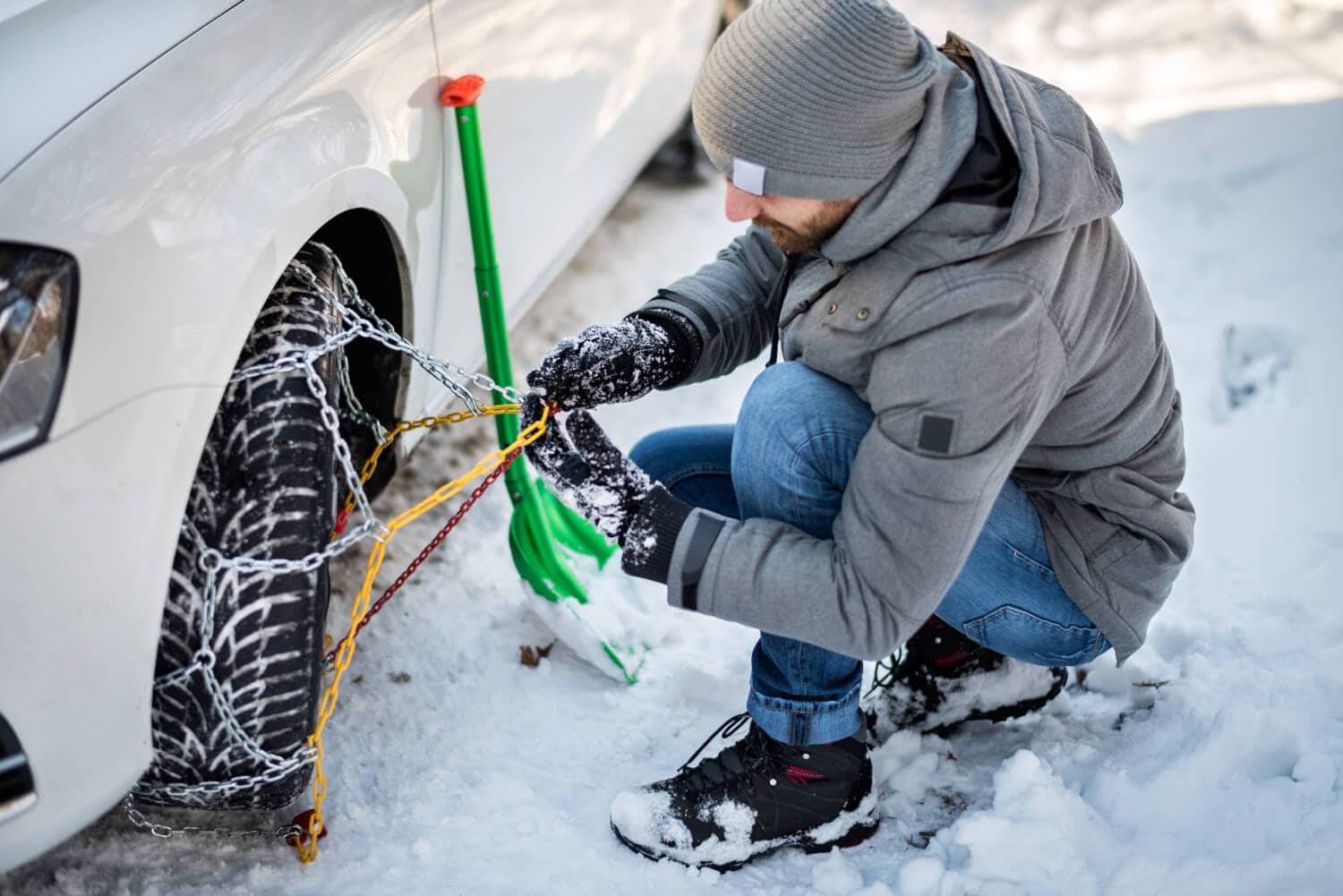Snow chains: professional tips for mounting
SAFE DRIVING Snow chains only help if the motorist fits them correctly. The garage owners of the Auto Gewerbe Verband Schweiz (AGVS) know what to look out for when using snow chains. In winter, snow chains are often not only helpful at higher altitudes, but also mandatory. The signal "Snow chains mandatory" - a blue sign with chain tires - makes [...]

In winter, snow chains are often not only helpful but also mandatory at higher altitudes. The signal "Snow chains obligatory" - a blue sign with chain tires - draws attention to this. Those who do not comply risk being stranded or even fined. Without a signal, however, the chains should only be put on if they are really necessary. Markus Peter, Head of Technology & Environment: "The basic rule is: Put them on as late as possible and take them off again as quickly as possible."
Trailers need snow chains
The task of the chain is to grip the snow with its links and thus prevent the tire from slipping away. This only works on a packed snow surface or when the snow depth is relatively high - but not in slush and black ice. Anyone traveling with snow chains should not drive faster than 50 km/h. Markus Peter: "A trailer also needs snow chains. That way, it stays on track better and can be braked more easily." In general, he said, motorists with mounted chains must adjust to a change in driving and braking behavior.
First a dry run at home
When assembling at the roadside, it is essential to wear a high-visibility vest. It is advisable to have gloves, a headlamp and a small pad with you so that you do not have to kneel down directly on the wet or snow-covered road surface. This can also be the floor mat from the car.
Markus Peter: "It is also advisable to try out the snow chains at home in a warm place - and not in the freezing cold at the side of the road. That way, you can familiarize yourself with the handling.".









